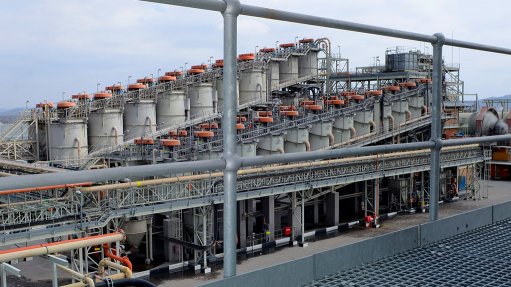
Walkways can be aptly described as the ‘arteries’ of most minerals beneficiation and industrial plants, providing functional access while bearing substantial loads and allowing air and light into working areas. It is essential that the floor grating used for such walkways be well engineered to ensure long life and optimum safety for users.
Leading local floor grating manufacturer Andrew Mentis operates an extensive facility that produces significant volumes of its RS40 Rectagrid which has long been the benchmark for walkways in southern Africa.
Elaine van Rooyen, marketing manager at Andrew Mentis, says that apart from supplying a standard floor grating product, the company is also able to provide a fit-for-purpose floor grating solution based on the customers’ requirements.
“A technical representative from Andrew Mentis meets with the customer to determine their precise needs and ensure that the structural integrity of the chosen product is maximised,” she explains.
“While taking into account the customer’s application needs, there are specific non-negotiable factors that Andrew Mentis applies in the production of all our floor grating products,” she says. “The manufacturing method we use, for instance, ensures that the transversals are positively and permanently locked to the bearer bars.”
The locking method is based on compressive pressure at the intersections, engineered to use the full depth of the bearer bar. The grating panels – with a pitch of 40 mm by 40 mm – are flat, square and untwisted, so there are no cracks or crevices at intersections where corrosion could take place.
“We undertake all manufacturing at our world class facility in Elandsfontein near Johannesburg, where the most stringent standards are applied,” van Rooyen says. “These quality processes allow the combination of high load-bearing capacity with a low relative quantity of metal. Filler bars distribute the load and stiffen the construction, while supporting bars take the load and transmit it to the bearing support.”
Andrew Mentis RS40 floor grating is engineered to take a specific loading, ensuring the safety of people walking or working on mezzanines, catwalks, platforms and ramps. The grating’s non-slip characteristics are created by the positive raised sections that produce multi-directional obstructions on the top of each bearer bar, allowing for a far larger surface contact area.
The company also makes floor grating with a serrated profile for those customers that have application for this. For corrosive environments where steel cannot be used, moulded fibre glass grating is also available.